I’m often asked if the GoPro makes for a good travel camera or if it can even be a replacement for larger photo cameras or smartphones. The ever-annoying answer is ‘it depends’.
While the GoPro can do some amazing things, it may not be the perfect choice for everyone.
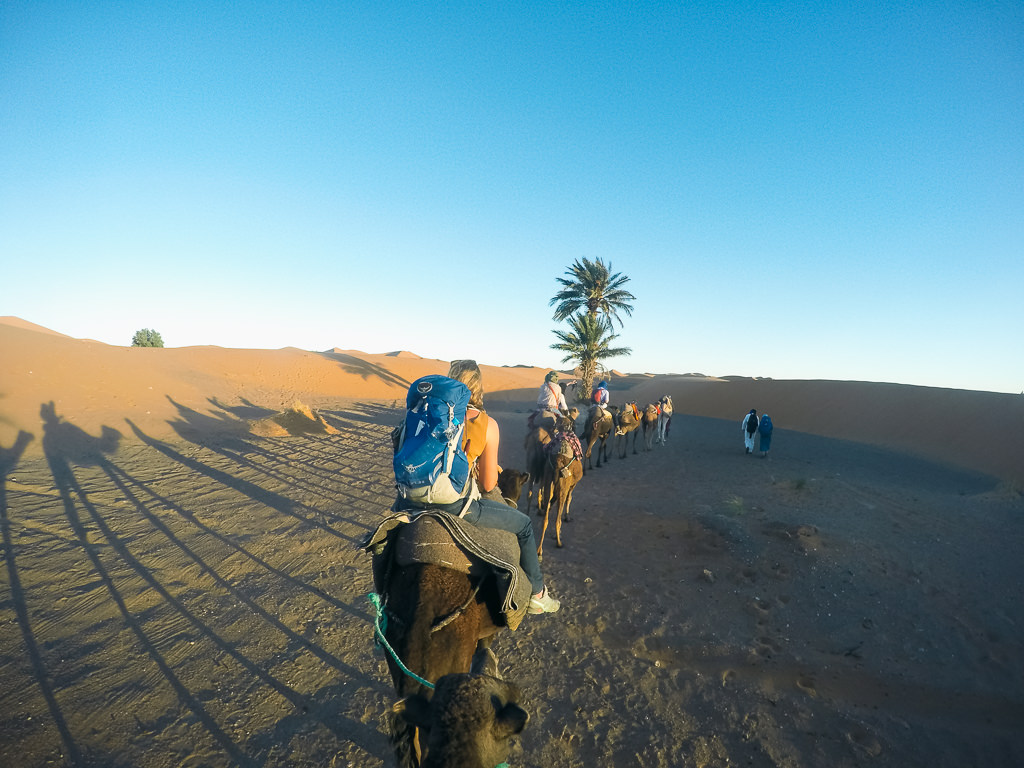
I’ve had a GoPro in my travel gear for years now, starting with a GoPro HERO 4, then a GoPro HERO 7, and now a GoPro HERO 10. Here I’ll share with you here my experiences (based on the GoPro 10) while answering various questions, such as:
- Is the GoPro a good travel or everyday camera?
- Can the GoPro take good photos?
- Can you get great results without being a technical genius?
Of course, I wouldn’t be on my third GoPro if I didn’t like it. Still, it’s a specific tool with some specific pros and cons. It’s essential to know about these — especially if you were to, say, rely exclusively on a GoPro to capture your once-in-a-lifetime trip.
Why get a GoPro?
My initial reason to start packing an action camera was simply that many of my adventures I hadn’t been able to capture with a normal camera.
Whether it was exploring caves in Thailand, mountain biking down Death Road in Bolivia, or scuba diving down the incredible sinkhole caverns of the Yucatan, I regretted not having any footage to remember these experiences.
I’m so glad I’ve had this “take it anywhere” camera with me ever since!
While the GoPro is most useful during adventure activities, it’s equally proven its worth just in terms of easily coping with rain, dust, shock, or sand. I once lost an expensive (but non-weather sealed) Canon DSLR to excessive water vapor at Iguazu Falls in Brazil and this is a worry I’ll never have with a GoPro, which is completely waterproof out of the box.
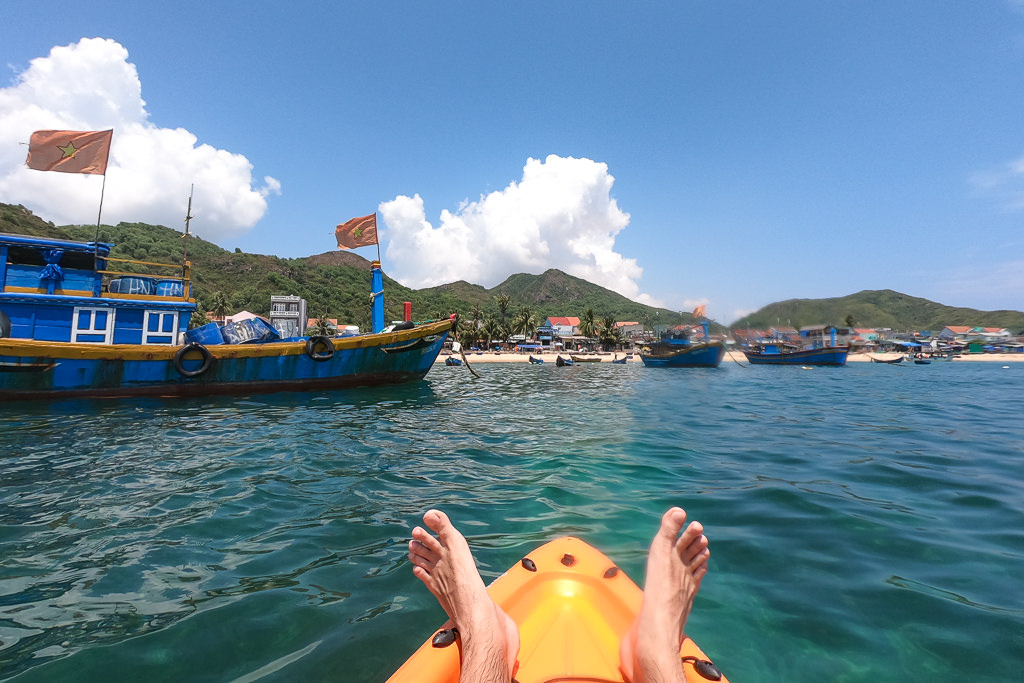
The more recent GoPros added another reason to enjoy them: thanks to the SuperSmooth stabilization — introduced with the GoPro 7 and since improved — it’s possible to capture incredibly smooth videos at any time without the need for a bulky gimbal. This stabilized video looks incredible and is far beyond what you can achieve with a regular camera without this feature.
However, if you’re wondering if the GoPro can be used as a ‘normal’ photo camera or just to create fun video travelogues, it absolutely can.
You don’t need to be able to do a triple cork on a snowboard to have great use for a GoPro. Personally, I don’t constantly do crazy stunts while travelling, so for me, it’s important that an action camera is versatile enough for general use. I have my GoPro for capturing my travels, for vlogging, and for taking photos as well as videos.
That said, the GoPro is amazing at some things and less so at others, which I will explain in this review.
Get this special GoPro 10 deal
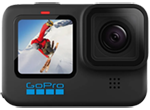 You can buy the GoPro HERO 10 Black from retailers like Amazon, but these days it’s better to buy it from GoPro directly. You’ll save $50 and get some major bonuses:
You can buy the GoPro HERO 10 Black from retailers like Amazon, but these days it’s better to buy it from GoPro directly. You’ll save $50 and get some major bonuses:
- Free 1 year of cloud & software subscription
- 50% off any accessories
- Free camera replacement
Using GoPro for pictures
GoPro is mainly a video camera, but since you may be curious about its much-less-advertised photo capabilities, let’s start here.
It should be said that action cameras don’t really specialize in photography. Nevertheless, the GoPro can definitely take good photos — even amazing ones if you edit them a little afterward.
And yes, you can take photos that look ‘normal’ and without any fish-eye lens effect.
However, a GoPro is still best for photos of landscapes or general action scenes and less ideal for close-up details or close-up portraits of people. Since it has no optical zoom (only a fairly ho-hum digital zoom), you probably also wouldn’t take one on a safari where having lots of zoom is a must.
Let me go through a few aspects point by point:
Fixed aperture: It’s important to know that the lens has a fixed aperture and that you can’t select any focal points. Simply put, the GoPro is designed to make more or less everything in focus, rather than letting you choose. A GoPro is therefore less ideal for shooting portraits with a lot of background blur or ‘arty’ photos with a shallow depth. However, when you hit the shutter/record button you can be fairly sure that the entire scene will be in focus, making it truly point-and-shoot.
Field of view: There are several fields of view you can choose from, ranging from the extremely wide SuperView to the highly center-zoomed Narrow field of view. The wide options are perfect for capturing all of the action while you’re doing sports or adventure activities, while the narrow ones are better for ‘normal’ situations. Personally, I like to have natural-looking photos and videos, so I generally have it set to Linear or Narrow FOV.
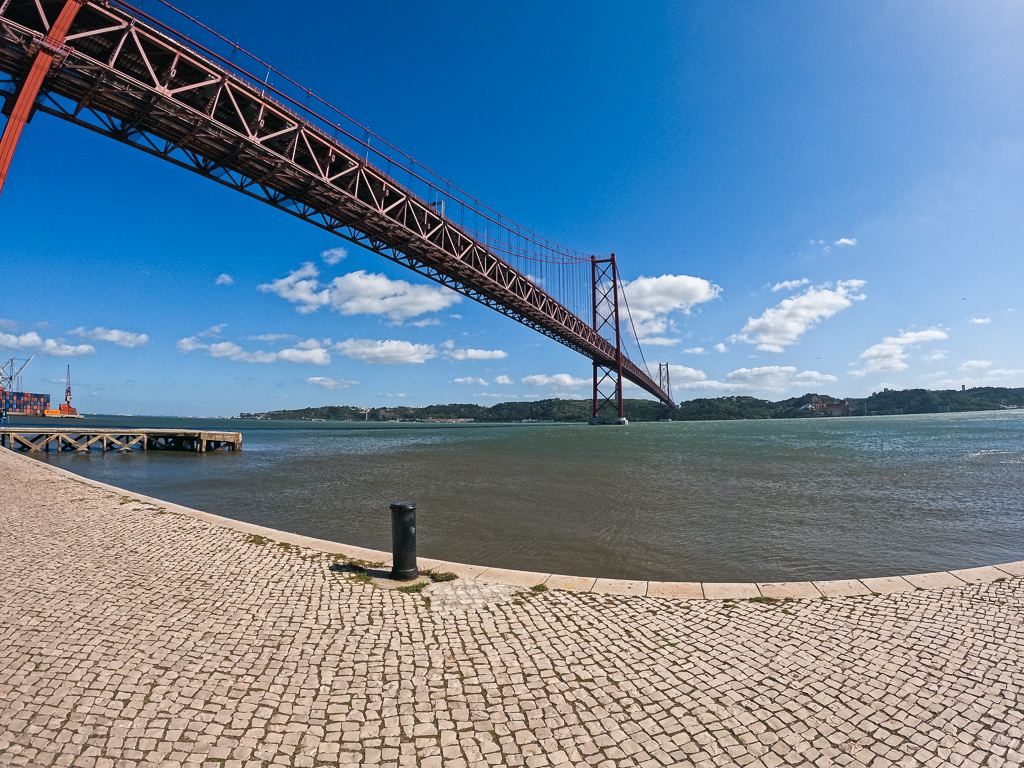
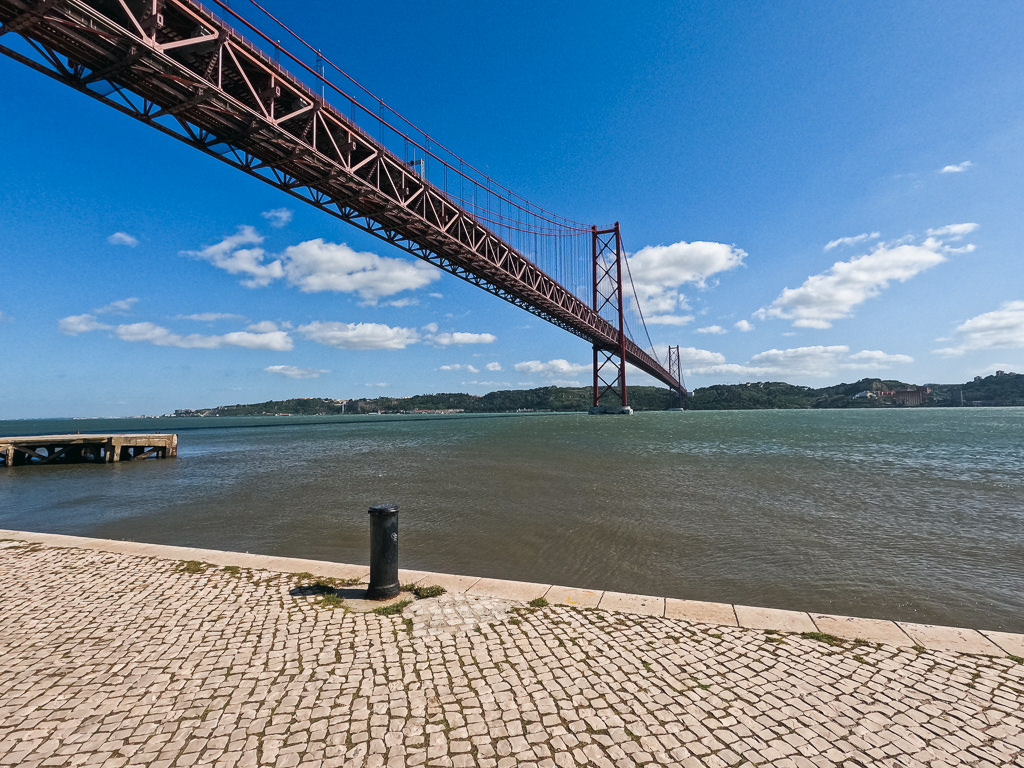
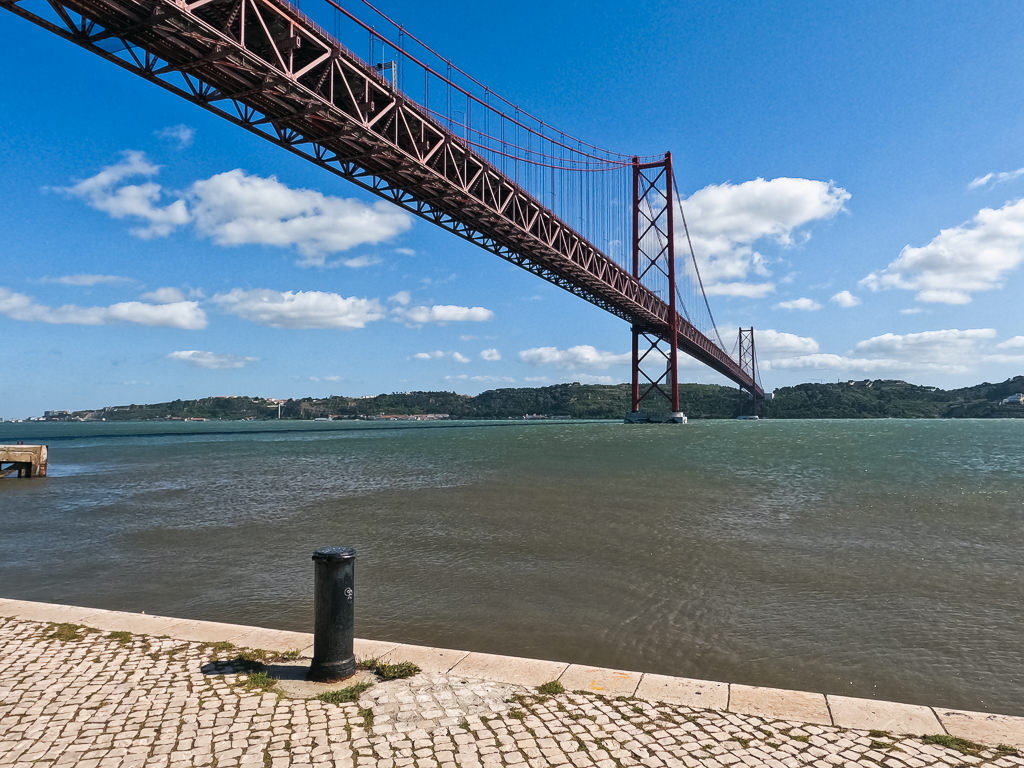
Minimum focusing distance: There is a minimum focusing distance of 12 inches or 30cm. This means that if you try to do extreme close-up shots they probably won’t be in focus. GoPro is best for capturing general scenes, landscapes, activities, etc. at a normal distance and not so good for taking extreme detail shots. For comparison, most smartphones have a minimum focusing distance of about 10cm or 4 inches.
Shutter delay: This is an aspect I wish GoPro was a bit better at. It takes about 4 seconds to switch on the camera if it’s not already powered up. Saving a photo can take another second or so (it takes longer in SuperShot mode). While it’s not the end of the world I do wish it were a little snappier sometimes. If a DJI Osmo Pocket can switch on and begin recording within a second, why can’t the GoPro? There is a mode for rapid-fire photos, but using the normal modes you should expect a slight delay.
Low light: The GoPro performs best in bright outdoor settings. In low light, the images can get fairly noisy at times. You won’t really see this at a glance, but you may see it when zooming in on the image. I recommend using Night Mode which improves the image quality a lot, or you can lower the max ISO in the advanced settings for less noise in low light.
RAW photos: Yes, you can take RAW photos with a GoPro! By default, it takes JPEG images that are already enhanced, but you can take RAW photos and make adjustments yourself in software like Adobe Lightroom. I actually use RAW mode by default as this gives the most options to edit later. However, keep in mind the RAW photos will always be in a wide field of view. If you want it narrow you have to adjust this yourself (e.g. using the “lens correction” tab in Lightroom). In the normal JPEG mode, the field of view will be whatever you choose on the GoPro.
Extracting photos from videos: Using GoPro’s free Quik app you can also extract individual photos from videos. This easily lets you grab the best moments from your video footage as high-quality stills. So, if you took a video but forgot to also capture an image, you can still do it later. Using this function will ensure the image isn’t blurry due to any video compression.
How to get the best GoPro photos
It’s possible to take phenomenal photos with a GoPro, but you do have to play to its strengths a bit.
If you just want some fun pictures to remember a trip, then don’t worry, it will do that well enough in more or less any situation.
But if you’re a creator and want the photos to look absolutely great, then there are a few useful things to know.
I’ve found that cloudy weather can sometimes be a challenge for the GoPro’s automatic metering. Images or videos can end up somewhat underexposed or have the wrong white balance on a cloudy day (i.e. they can be a bit too dark or slightly sepia-toned). Luckily, this is also easily fixed in any image editing app. Even just pressing ‘auto correct’ — in something like Photos for MacOS, GoPro’s own free Quik app, or even the auto-enhance in Instagram — can instantly improve GoPro footage taken in grey conditions.
It’s best to avoid shooting directly into the sun, though I have to say the GoPro 10 is miles ahead of earlier versions when it comes to detecting over-exposure. I remember pointing my old GoPro 4 straight towards the sun would lead to a totally bleached-out image, but nowadays it’ll know more or less what to do.
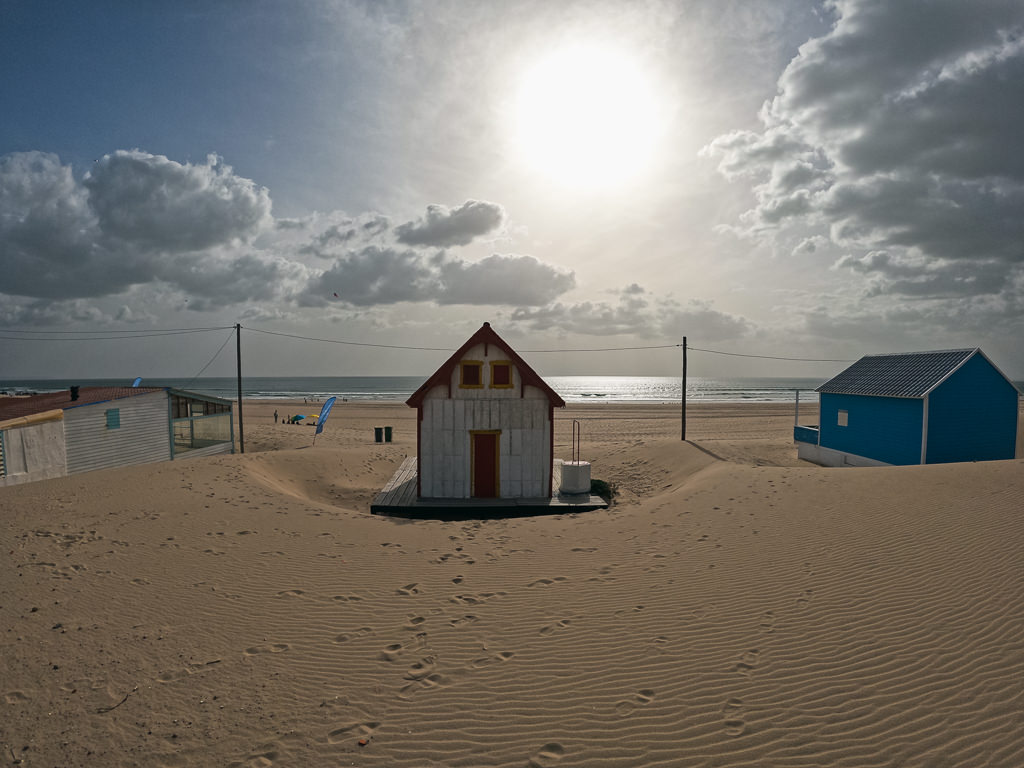
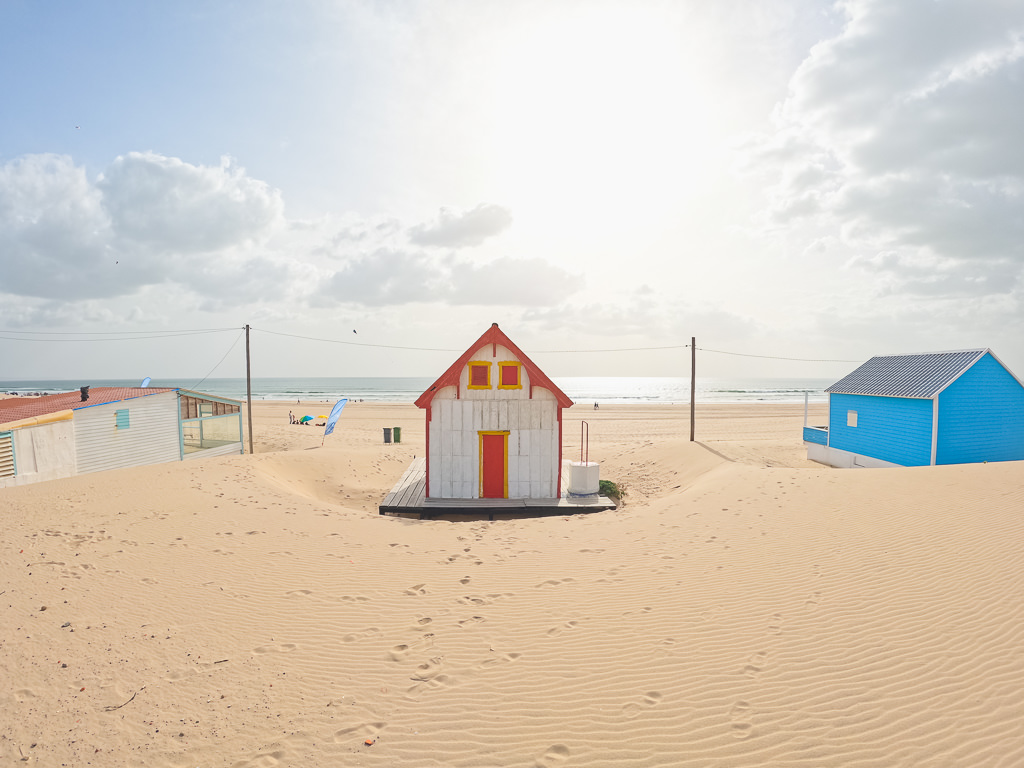
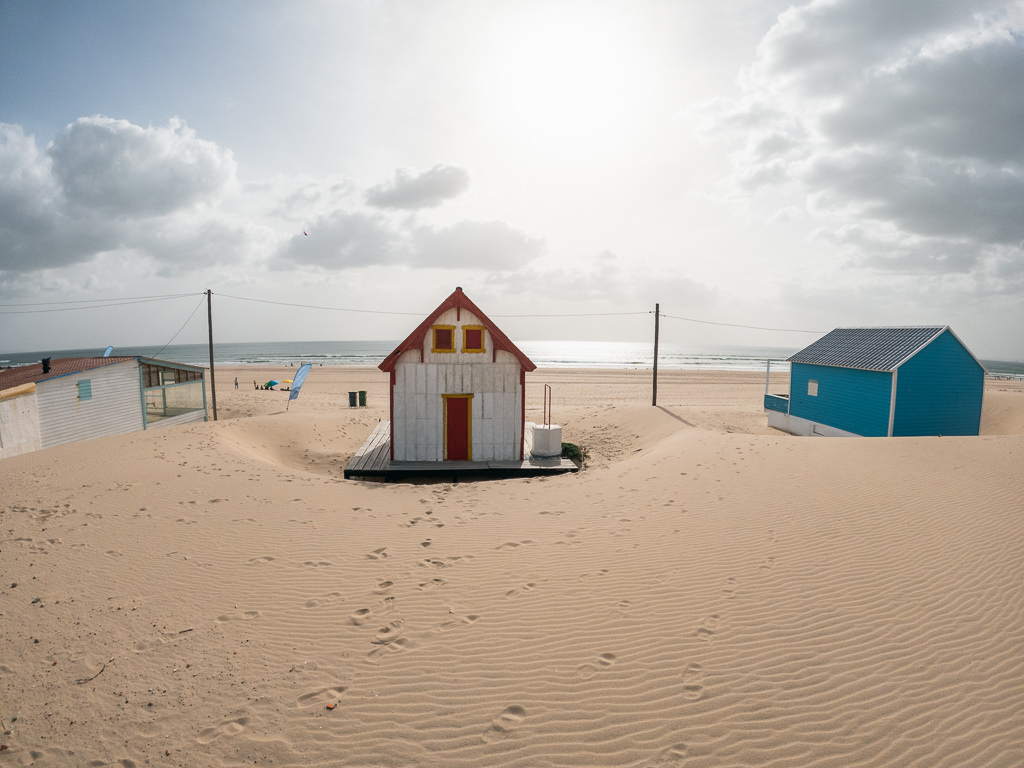
As shown above, when shooting photos you can also make use of the HDR mode which will merge several photos with different exposures into one, dramatically boosting the dynamic range. This is especially helpful in scenes with some extreme brightness, such as this shot directly facing the sun. If you shoot RAW you can also manually tweak the highlights and shadows; I think this produces the most natural results.
As for night scenes, the GoPro isn’t incredible when it comes to low-light performance but it’s good enough if you’re not too picky. (If you want your shots to be totally without any noticeable noise, as some professionals may demand, then that’s another story.)
If you’re comfortable using the advanced settings, you can lower the maximum ISO to prioritize image quality. I’ve set mine to maximum ISO 800 which improves low light shots quite a lot. You can also simply switch on Night Mode, which prioritizes capturing more light over having more frames per second.
Comparing to smartphones
When comparing GoPro’s images with those from smartphones, you should know that the latest smartphones use something called “computational photography”. This means they take lots of photos at the same time and then use AI to merge them into one idealized image.
You can see this approach easily when shooting in low light on a high-end Samsung or Apple phone for example. If the results seem almost unreal that’s because, well, strictly speaking they’re not real photos but created by the computer. GoPro doesn’t use this kind of technology, so it can be comparing apples to oranges, but I do think to the average user the photos of an advanced smartphone will typically look better at first glance.
So, if it’s just for photos, and you already have a top-of-the-line smartphone, and you aren’t worried about the environments you’ll be using it in, then you may not need an action camera. Of course, that’s a lot of “ifs” and an action camera definitely fulfills quite a different role from a smartphone.
Action cameras have wide-angle lenses and you may have seen GoPRO footage with a round fish-eye-like effect. That is great for action moments, but less so for general use. If you don’t like the fisheye style, no worries. You can easily choose between wide and linear shooting modes from the on-screen menu.
If you’re trying to get a perfect shot, I find that (at least lightly) editing or color correcting photos can make them truly come to life. I recommend this if you’re a creator. If you won’t be editing your photos later, it’s best to set the image style to “vibrant” on the GoPro, as this will already push the intensity of the colors.
Super smooth video
As of the GoPro HERO7 there is a remarkable video feature called HyperSmooth. This digitally stabilizes your footage on the fly.
Normally you need a gimbal to achieve this with most other cameras. A gimbal is one of those devices that removes camera shake by holding it steady and compensating for movement. With HyperSmooth there is no need for such bulky gear. This enables you to get very professional-looking video footage from just a very small device.
On the GoPro HERO9 or later there is even a feature letting you keep the horizon straight, which will compensate for angles up to 45 degrees.
I’ve used both the GoPro and the DJI Osmo Pocket, a camera that has a built-in gimbal, and I have to say the results are virtually identical. The main difference is that a DJI Osmo Pocket is not weather/shock/dust proof, whereas an action camera is.
I love gliding the camera through a scene and achieving what almost looks like a cinematic long shot from a film. It really does make your videos look twice as good, and all without any need for accessories. It is without doubt a killer feature.
Below you can see what Hypersmooth looks like. Of course, you can still see your steps somewhat, though you can walk around ‘ninja style’ and eliminate this to a great degree. For individual panning shots, you won’t notice this at all.
When HyperSmooth was first introduced it could only shoot in this mode at up to 60 frames per second, but now it works for all resolutions and framerates. HyperSmooth combined with up to 8X slow-motion can produce some stunning slow-motion shots.
One scenario where I’ve especially loved this capability is when snorkeling or scuba diving, where waves and your breathing make it very hard to hold the camera still and where fishes often move in jerky ways. Switching on HyperSmooth with horizon leveling and cranking down to 60fps or 120fps can have some mindblowing results.
Below you can see a quick sample of some smooth slow-motion video shot at 60 fps.
GoPro for selfies or vlogging
The GoPro is perfect for selfies. Firstly, it has a front-facing screen letting you perfectly frame the shot even when the GoPro is turned towards you. This feature was introduced with the GoPro 8 and has been a true game-changer.
The wide lens also makes it possible to fully capture the scene around you when you’re taking a selfie. I find this is ideal for travel selfies where you truly want to show off the scene around you. Those epic temples or majestic views can be fully visible with your equally majestic face and upper torso fully in the foreground as well.
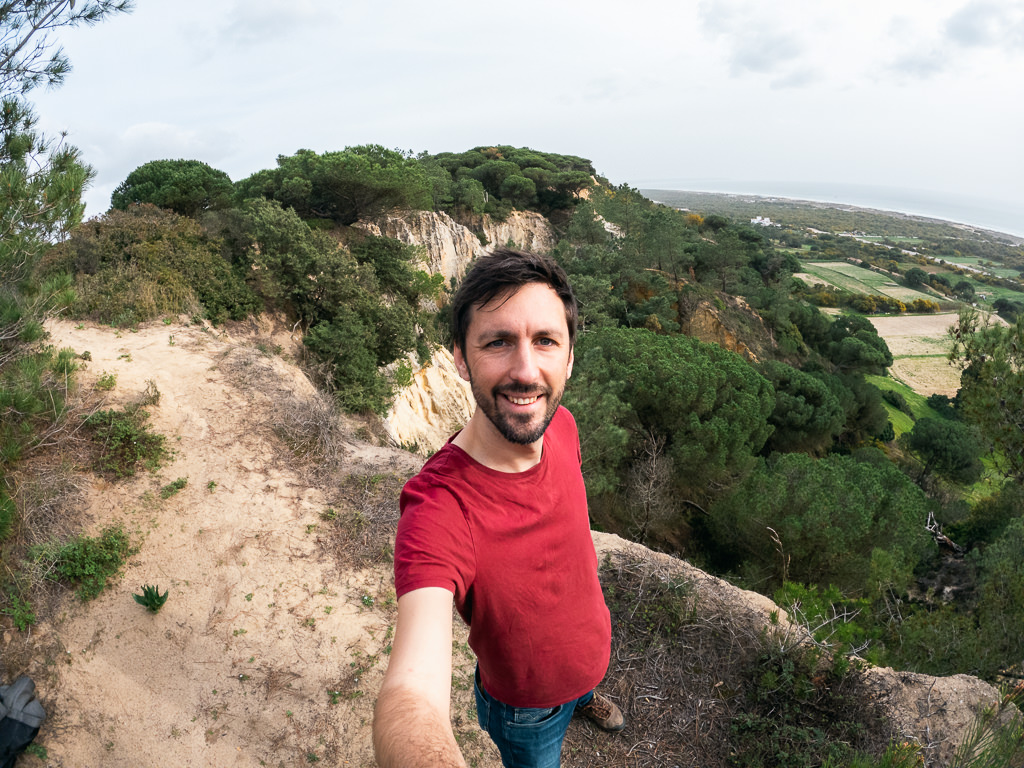
I like to use the GoPro for selfies especially when I travel alone. Since I travel solo often I’ve typically lacked good pictures of myself. (When I ask random other people to take them, they’re often quite bad.) But when I take the GoPro on a trip this is not an issue.
As a selfie-taking device, the GoPro has left me extremely satisfied. Since the GoPro is so compact and easy to carry in any situation, it has allowed me to take some cool pictures of myself while I was swimming, on a boat, or on top of a mountain — even when I was completely on my own.
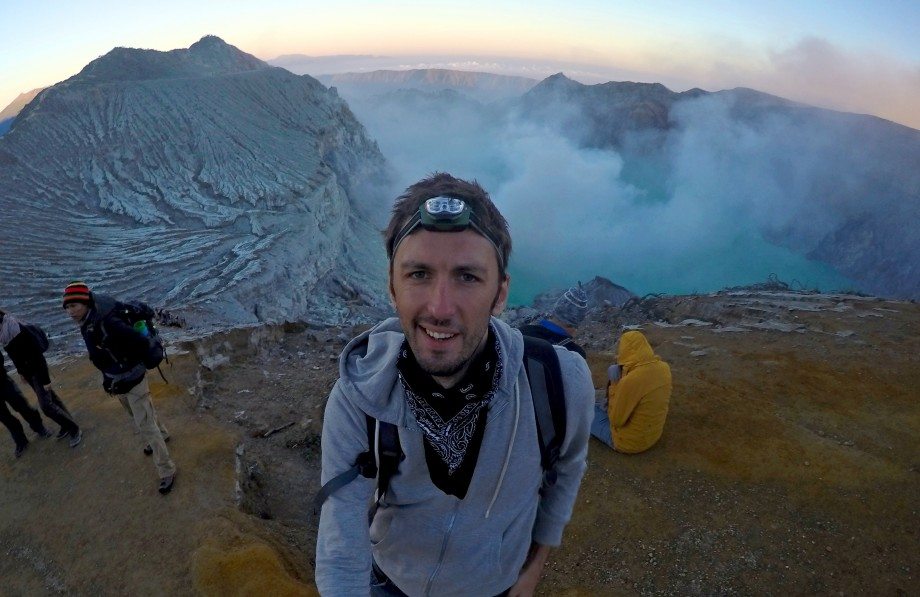
If you’re traveling together, then you’ll be able to easily fit at least two people in the shot and fully show whichever amazing travel location is behind you.
By the way, I highly recommend getting the GoPro shorty monopod accessory. You can use it to extend the GoPro just a bit farther out. It doesn’t seem like much of a difference but it will put it in a perfect selfie position. You’ll be able to easily take very natural-looking shots without your arm necessarily being visible in the foreground.
The shorty can also be extended into a mini-tripod. This adds another way to take self-portraits when using the shutter timer function.
I’ve used cheaper third-party tripods and grips for my GoPro in the past, but in this case I think it’s worth getting the official GoPro shorty tripod, as it’s multifunctional and really well-made. If you buy only one accessory, I think it should absolutely be this one. (By the way, you can get it with 50% off if you buy your GoPro on the official site. With the discount the Shorty is just $20 extra which is quite a steal.)
The selfie features naturally make the GoPro also ideal for vlogging. With the Shorty you will be at a perfect distance from the camera, avoiding the kind of awkward vlogging shots where the person’s face takes up almost the entire screen.
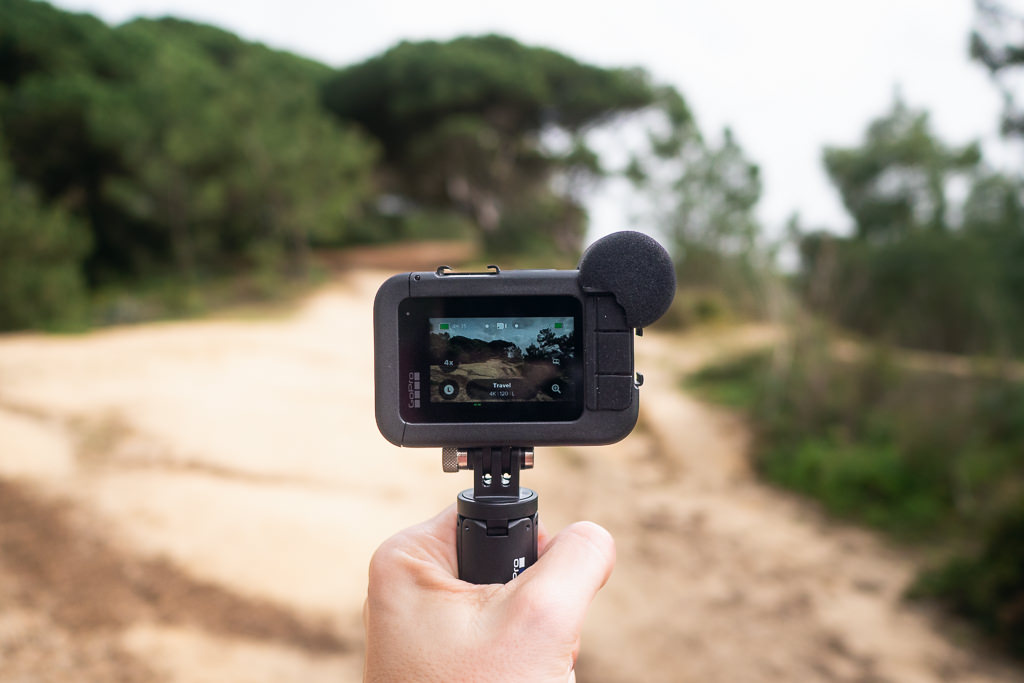
The image above shows my GoPro 10 with the Shorty and the Media Mod attached.
The built-in microphone is pretty good, but if you want better audio quality for vlogging, consider buying the Media Mod. Unlike the GoPro itself this extension is not waterproof, but it has a much better directional microphone and an attachment point for an external one. I recommend the Media Mod only if you’re a content creator or vlogger — for personal use it’s not necessary as the GoPro’s own mic should be more or less fine, and at around $80 I think it’s less of a must-have in that case.
I originally bought the Media Mod because I thought I’d be attaching my Rode VideoMic external microphone to the cold-shoe slot. In fact, I was so satisfied with the media mod’s built-in mic that in practice I’ve never attached an external one. If you’re narrating a vlog, your voice should be very clear just with the built-in mic. I’ve had good audio both with the camera facing away and towards me.
Quick Overview: My recommended GoPro accessories
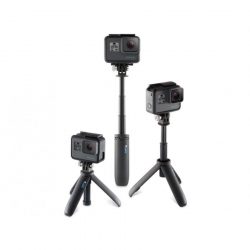
GoPro Shorty Mount
- Use it as a mini tripod or extension pole
- Take better selfies
- Use for timelapses or timed shots
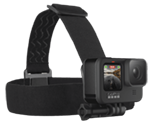
Head Strap
- The easiest to use mount for any adventure activities
- Very lightweight so easy to pack
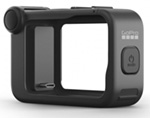
Media Mod
- Adds better microphone
- Add attachment points for external mics or lights
- Recommended for vlogging
Sharing & editing
The user interface and sharing functions on the GoPro have always been a bit janky, in my opinion, though it’s improved considerably in the last couple of versions.
Connecting the GoPro to a smartphone using BlueTooth is way easier than it used to be. You can have the Quik app automatically download and backup your footage to the cloud.
It’s also quite easy to do basic editing in Quik, such as selecting a part of a video to turn into slow motion. It can also automatically make a montage video using AI. This works best if you mark important moments in your videos using the highlight function (this is a bit like creating a bookmark).
Personally I do prefer using other software to edit. There is various free software you can use, such as iMovie on Mac, or DaVinci Resolve. But for just some quick edits or to easily post a little sizzle reel to social media, the GoPro Quik app works quite well.
Conclusion
While my DSLR has always been my main camera for travel photography, I consider the GoPro a great additional camera. I use it for situations where I don’t want to take the DSLR as well as for vlogging and shooting very smooth video footage.
It’s definitely best for video but it does also shoot good photos. Just keep in mind it doesn’t have zoom or an adjustable aperture.
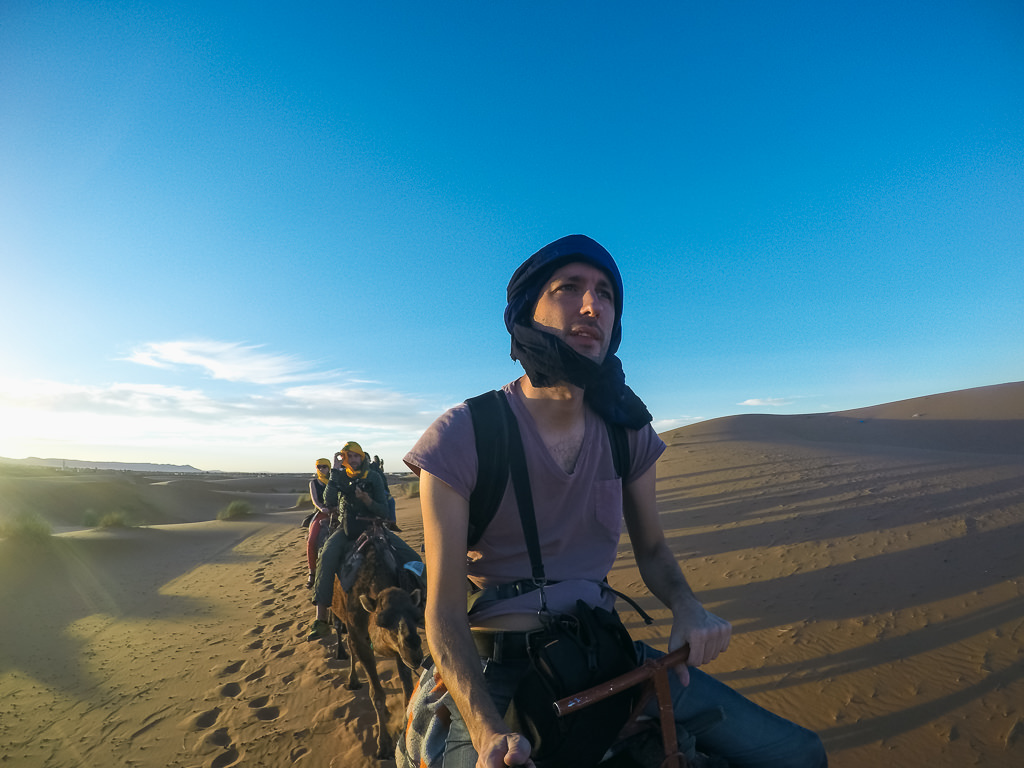
What I really like most about the GoPro is that thanks to the weather-proof housing I can take it with me any time — including while swimming or in dusty or sandy environments. It’s an easy camera to take to the beach even if you’re traveling solo as you can always keep it tied to your wrist while swimming so it won’t get stolen.
(By the way, it can be hard to believe, but you really don’t need to have a protective case at all unless you go scuba diving at depths over 10m or 30ft. Yes, you can just take it into the water like that.)
If you’re planning a backpacking or adventure-focused trip, it’s especially fun to have a GoPro that you can always grab and use anywhere. You simply never know what situations you’ll end up in.
When I traveled in Armenia I arrived in the capital only to discover the entire city had turned into a giant water fight — an annual tradition where people throw buckets and shoot water pistols in one mad frenzy that even involved some cops and firemen joining in. It was so much fun to strap on a GoPro and enter the fray!
Do keep in mind that the footage you see on GoPro’s website was shot by professionals and has probably been carefully color-corrected, so your own footage may not immediately live up to this ideal quality. A bit of light editing definitely brings the footage to life.
Should you buy a GoPro?
Shoot video in any situation
✔️ Yes, GoPro is perfect for this! Highly portable and totally weather-sealed, it’s great for shooting travel videos anywhere.
Shoot video and sometimes photos
✔️ Yes, GoPro is perfect for this! While it’s best for videos, it can also take good pictures (though not extreme detail shots or highly zoomed pictures)
You mainly need a camera for photos
❌ Consider a normal DSLR camera or smartphone, which gives you better control over your photography. If you don’t need to take photos in adventure/sports/action situations, a normal camera with a bigger sensor will probably give you better results.
One last thing to say is that to get the most out of your GoPro it’s worth having a few accessories, as using these really makes it different from normal cameras.
The two must-haves, in my opinion, are the GoPro Shorty plus a simple head strap for any action activities you might do. It’s also highly worth getting a spare battery; I usually go through two batteries in a single day. The GoPro does also charge over USB-C, so if you already have a power bank you can use that, though spare batteries can of course be instantly swapped.
Overall the GoPro is a powerful device and one that I never travel without. It’s not the same as a big DSLR camera, but this is to be expected. If you understand its strengths and weaknesses, you’ll find the GoPro is an incredible travel camera.
Note: instead of purchasing through a third-party retailer, I highly recommend buying through GoPro itself as this will give you the 50% accessories discount, a free cloud subscription, and a “no questions asked” camera replacement warranty.
Some links may be affiliate links, meaning I may earn commission from products or services I recommend. For more, see site policies.
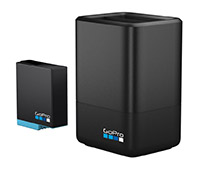



Nice review, thanks!!
I love my gopro hero 7. Very versatile travel video camera. Totally worth it. Even if you have a dslr or other camera. The hero 8 interests me. Especially with the new media mod case for vlogging. Will have to check it out.
Thank you for this. I found this very helpful as I was debating on upgrading my phone or buying a GoPro for getting video and taking photos when I travel. I’m now sold on the GoPro.
I’ve just updated my GoPro and I can’t wait to test it out. GoPro’s are really handy for traveling especially when you like adventure travel <3
-Steve
Dear Marek, I want it for vlogging but you didn’t say anything about its audio recording. Please, do a review on its audio recording quality . Thanks.
Good point, I didn’t cover this. The audio quality is OK… I think it’s nice to have an external mic for good vlogging.
How would the GoPro 7 be for barrel racing and quick horseback riding. Such as trail riding or running with the horse.
Don’t see why you couldn’t use it for that
Hi. Nice article. Did you have any experience with the cam under water ? Thanks Peggy.
Yep. Fine to take underwater up to 10m down. I’ve used a seperate diving house for anything deeper.
Hi Marek,
Can you suggest a good compact camera for night sky photography like photographing the milky way as it is difficult to carry a DSLR camera while trekking. Any suggestion would be highly appreciated
It’s hard to say as compacts are usually not so ideal for this (because you’d probably want a wide angle lens with a low f-value). I have a Micro Four Thirds camera (not as heavy as most DSLR’s) with a Laowa 7.5mm f/2 lens, which many people use for night sky photography. Maybe that’s something to consider.
Great review. Going to buy one myself now.
You consistently refer to linear mode as a solution to the wide dynamic mode. I have a Hero7 silver, and have not been able to find any mode settings that can take away the wide dynamic range. This is the only article I have found that refers to a linear mode at all. Can you please provide a description (for the hero7 silver) as to how I can find this linear mode for taking photos without the fisheye effect? Thank you
It seems the HERO7 Silver is incapable of this (source.) This is a little bizarre as even the HERO4 Silver (that I used to have) has Linear mode – I guess they took it out except for Black.
Appreciate the timely response. It looks like I will be fishing out the extra $100 to skip the post-processing… Thank you
It does save a ton of time! Good luck 🙂
It has been available since the 5th generation of GoPro cameras, but only for the “Black” editions (not silver).
How did you get the panning motion on the time lapse near the end? Gimbal or in-image panning with the wide angle?
That video is all in-camera and then exported straight to YouTube. No gimbal or editing.
Awesome review!
Can you please provide a quick summary on which resolutions/ settings I need to use just for a simple travel vlog? I will be travelling to South Korea soon and I will definitely use my new GoPro Hero 7 black for all the places that I’m going to visit.
Which is better to use? 4K wide? linear16:9? 4:3? Some say that 1080 is just fine since most people will not know the difference when you post it through social media (i.e. Instagram or Facebook) but I don’t see any benefit in using this expensive flagship model just for 1080 resolution! LOL
Pardon for my noobness! =)
Thank you for you help!
Hey Marvin. Linear 16:9 will be best for vlogs. It’s true that 4K might be overkill … most videos get rendered out to 1080p for YouTube anyway. It can still be nice to record in 4K as this will give you more leeway in editing (for instance, you can crop the video to highlight something, without losing quality).
Nice review, thank you!
I have gopro hero 3+ black and love it a lot as a traveling camera. Thinking of Gopro 7 black now because of hypersmooth feature.
Since smartphones can capture 40mpix images and 4K video (Huawei P20Pro for instance) there is no need for big cameras anymore. Atlest for most part of users. Some geeks like me love to have set of gopro + sony RX100 for all the purposes.
regards from Russia 🙂
Yes smartphone camera are getting better all the time! The lenses will always be tiny though, so in terms of image quality they’ll always be a bit behind dedicated devices. Sony RX100 can definitely capture better images 🙂